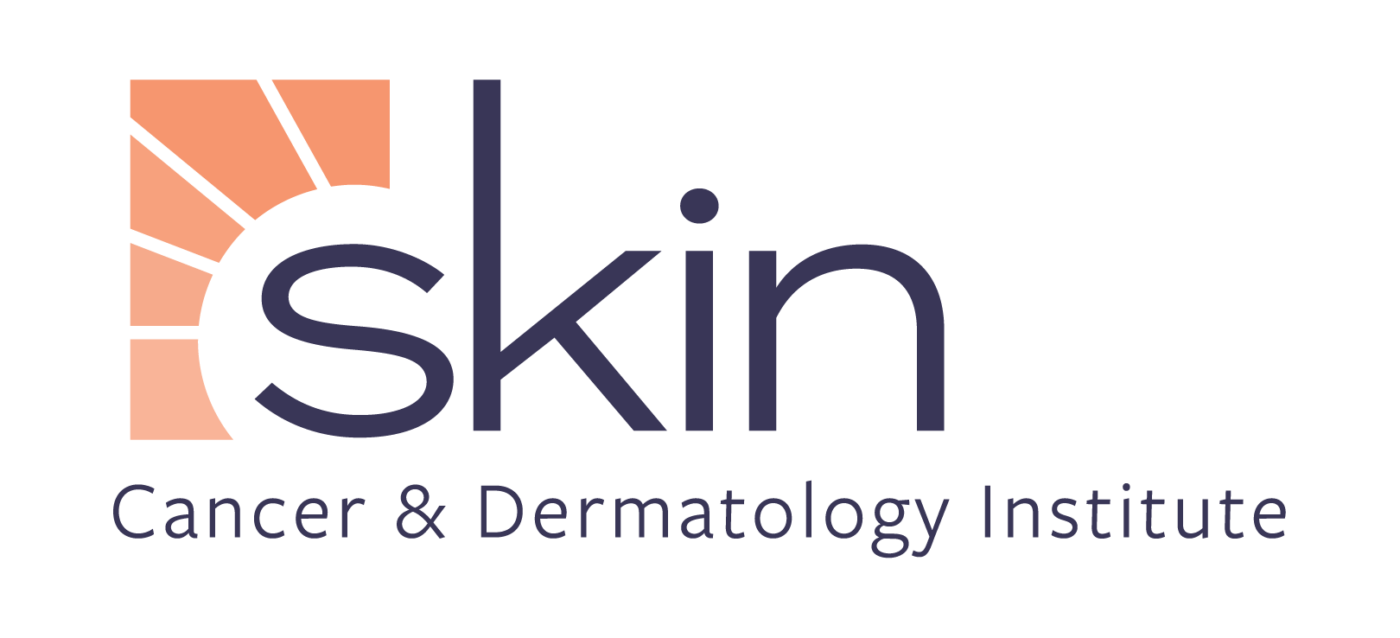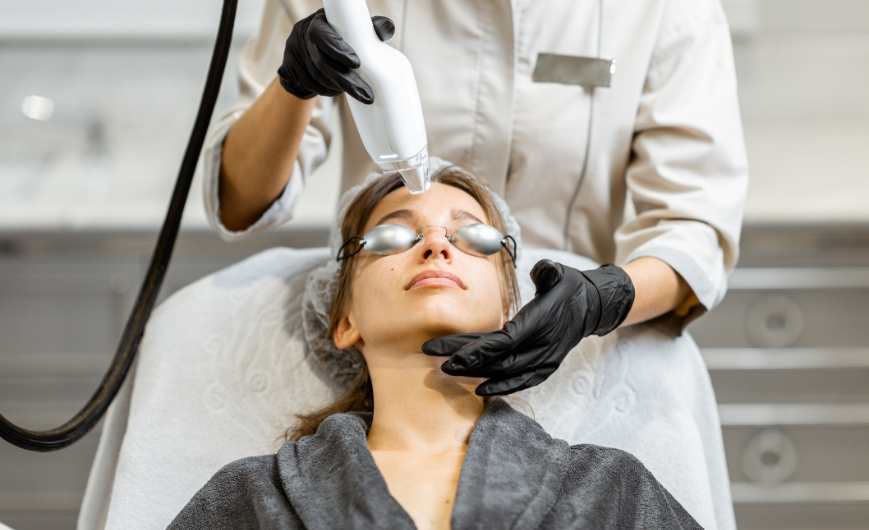By Nichole Munk, Cosmetic Laser Specialist
Cosmetic lasers have become such a great tool in the Dermatology field. What makes them so great? If you have a skin care concern, there might be a laser out there that can help. Granted, lasers can’t solve every issue, but they can now treat different skin types while minimally invasive with a shorter recovery period. The American Academy of Dermatology discusses some skin conditions that lasers can treat, including skin redness, pre-cancerous spots, and wrinkles.
Let’s Start with the Basics
Though you don’t need to know everything there is to know about cosmetic lasers, it doesn’t hurt to learn the basics before deciding on treatment. In addition, being informed helps you have a more productive consultation with your Provider.
Laser is an acronym for Light Amplification by Stimulated Emission of Radiation. What does that mean for you? Lasers use a focused beam of light that uses a precise color or wavelength to target a specific area of the skin while leaving the skin around it unharmed. These different wavelengths are absorbed by different targets in the skin, which are converted into heat energy when it hits the target. For example, blood absorbs yellow light wavelengths, which would be used for skin redness concerns. So, let’s look at some terms you might come across that relate to the type of laser used.
Ablative v. Non-ablative
Ablative lasers remove a thin layer of the outer skin (epidermis) while heating the underlying skin (dermis), stimulating collagen growth. As the epidermis heals, it regrows skin tissue that appears smoother and tighter. These treatments are considered more aggressive, leading to a longer recovery while your skin heals.
Non-ablative lasers heat up the underlying skin tissue without harming the surface skin so that your body produces new collagen. This is a milder treatment than an ablative laser, leading to a faster recovery time.
Fractionated v. Non-fractionated
A fractionated laser is a type of laser that can be ablative or non-ablative. It delivers microscopic columns of thermal damage throughout the tissue area. They were developed for shorter recovery times and to reduce the risk of side effects since it only treats a “fraction” of the skin instead of the whole surface. Some lasers under this category include pulsed-dye lasers, erbium lasers, and light therapy lasers.
Non-fractionated lasers affect the entire targeted skin area with a solid beam of laser energy. This makes them more aggressive than fractionated lasers and are used for more severe issues such as deeper age spots and deep wrinkles.
CO2 Lasers – One of the first and highest-powered lasers that remove thin layers of skin with minimal heat damage to the surrounding tissue by using carbon-dioxide gas.
Lasers we Offer at Skin Cancer & Dermatology Institute and What They do
Clear + Brilliant: A gentle, no-downtime fractionated resurfacing laser that refreshes your skin from the inside out by replacing damaged skin with healthy, younger-looking tissue. It helps with fine lines and wrinkles, reduces pore size, and improves skin texture.
Fraxel® Dual: This non-ablative fractional laser uses microscopic laser columns to penetrate the skin. Its two different wavelengths (1550/1927) can be used separately or together to stimulate collagen production. It treats sun damage, aging skin, wrinkles, actinic keratosis, melasma, and acne scars.
Fraxel® Repair: A fractional CO2 laser that penetrates deep into the skin to remove old, damaged skin cells. Your body’s healing process is stimulated, which replaces the cells with fresh, glowing, healthy skin.
Quanta Evo Light™ 4V: This EVO Light 4V combines the functionality of multiple individual lasers, including IPL (Intense Pulsed Light), into one. This allows it to be versatile in treating different conditions, such as eliminating blood vessels and sunspots, reducing redness, minimizing the appearance of scars, and reducing unwanted hair.
Sciton®BBL™: Technically not a laser, the Sciton BBL uses broadband light that targets uneven pigment concerns like freckles, age spots, small facial veins, and rosacea. It also improves fine lines and wrinkles.
Sciton® BBL™ for Acne: An FDA- approved treatment that utilizes light filters to eliminate acne-causing bacteria and reduces inflammation and acne-associated redness to promote healthy, luminous skin.
Sciton® Microlaserpeel®: The Microlaserpeel removes a thin layer of damaged skin to improve texture and provide a more youthful appearance. It treats wrinkles, scars, keratosis, sun damage, and pigment irregularities.
Sciton® Contour TRL™: The Contour TRL or Tunable Resurfacing Laser combines the powers of radiofrequency and ultrasound energy to tighten and tone both superficial areas or deeply troubled areas.
Spectrum: A multifunctional laser that includes the following: a Diode laser for hair removal; an Intense Pulse Light (IPL) that can be used for acne reduction, removal of pigmented lesions, and vascular reduction; a Long Pulsed Yag laser for vascular lesions; an Erbium Yag laser for skin resurfacing, and a Q-switched Yag laser that uses dual wavelengths used for tattoo removal.
Vbeam Prima®: This targeted FDA-cleared laser therapy improves skin appearance and texture. It treats various conditions, including redness, acne, rosacea, venous lakes, poikiloderma, port wine stains, and spider veins.
Preparing for Laser Treatment and What to Expect the Day of
You first want to consult a Board-Certified Dermatologist to see which treatment is best for your skin care concerns. During your consultation, your Provider will examine your skin and talk with you about risks, expectations, and concerns. Once you and your Provider decide on a treatment plan, you will be given instructions on preparing for the procedure. Of course, it depends on what treatment you are receiving. In general, you should avoid the sun, stop all retinol products, and ensure you do not have any major breakouts, open sores, or infections on your face.
Your laser procedure time will vary depending on the size of the treatment area and the laser used. The amount of discomfort varies by patient as well as the depth of treatment. Some treatments may require topical and/or local anesthetic. Most feel a sensation of mild heat or a sunburn. You will be provided with safety shields or glasses to protect your eyes.
Post-Treatment Care
About 24 hours after treatment, you may see swelling or some skin sloughing. You may also experience redness, itching, burns, discoloration, and pain. Always ensure that the area treated is clean and hydrated while your skin heals. You want to avoid hot tubs, saunas, heating pads, or anything that will induce heat to the area treated. Lastly, you want to avoid the sun. If you need to spend time outside, protect your skin with sunscreen with an SPF of 30 or more. Follow your Provider’s instructions to get the best results from your treatment.
For over 20 years, Skin Cancer & Dermatology Institute has been helping patients with a comprehensive scope of services in the Medical and Cosmetic Dermatology field. You’ll find friendly, top-notch Board-Certified Dermatologists, Fellowship-Trained Mohs Surgeons, Physician Assistants, and Licensed Aestheticians at our locations in Carson City, Elko, Fallon, Incline Village, Reno, Sparks, and Truckee. Book an appointment here.
About the Author:
Nichole Munk, Licensed Aesthetician – Nichole has been in the medical field for over fifteen years, starting out as a medical assistant. She realized she had a passion for cosmetic dermatology, wanting to help her patients with their cosmetic concerns. Nichole stays current with advances in cosmetic dermatology through continuing education, and she wants to always give her patients the best experiences and outcomes.


